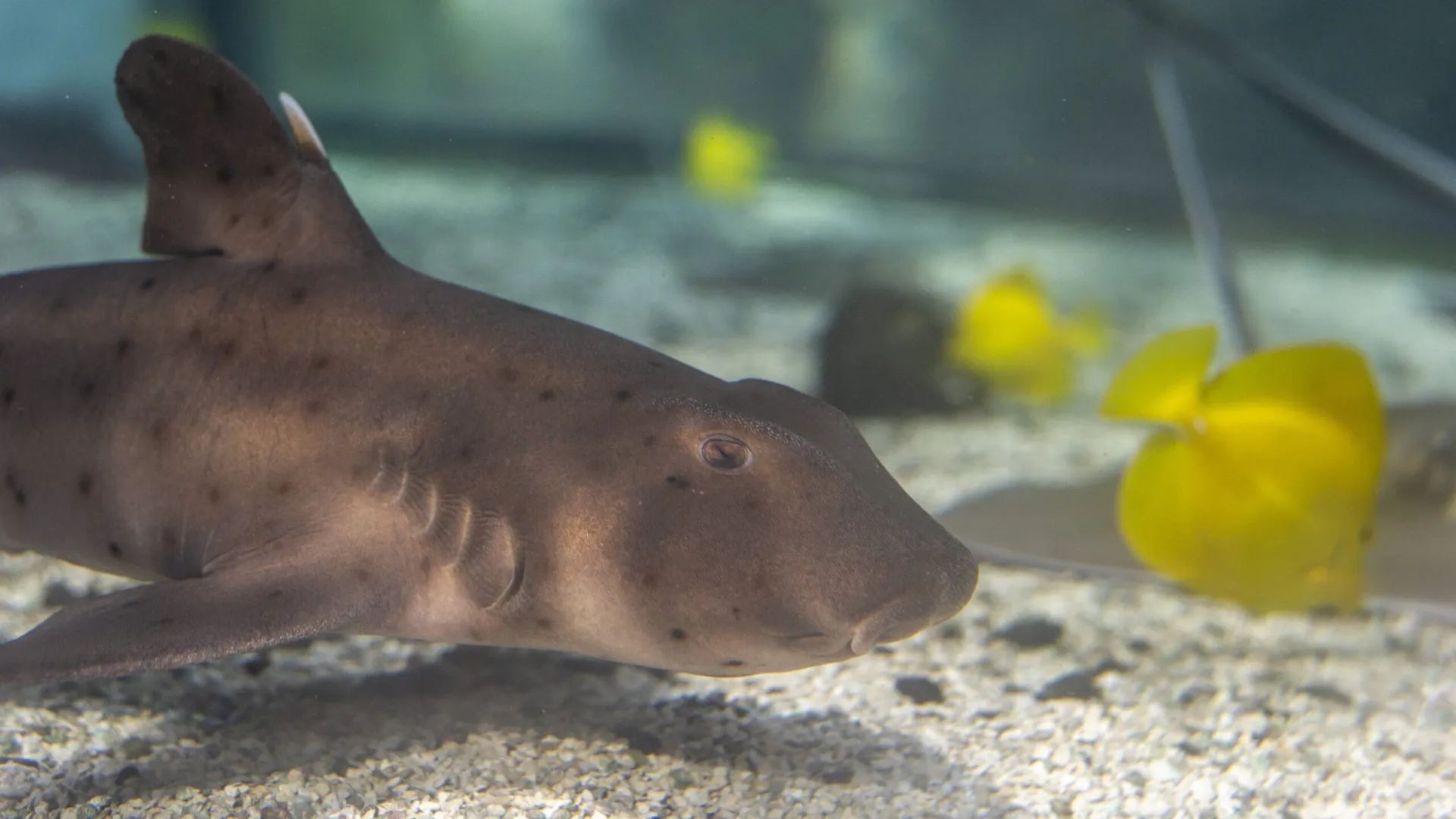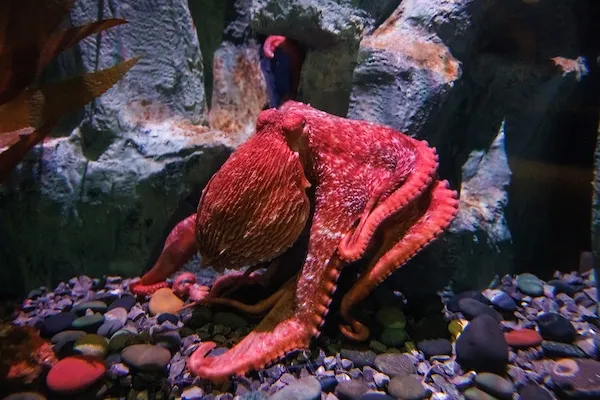With James Gunn’s cinematic reboot of Superman piling on accolades faster than The Man of Steel can clear tall buildings, the term “super” is on a lot of minds lately.
With 13,000 animals and hundreds of species in its living collection, the Tennessee Aquarium is home to several species that, while not at the level of the world’s favorite Kryptonian, possess abilities that are impressive in their own right.
So, before or after catching a screening of Superman at the Tennessee Aquarium IMAX 3D Theater, be sure to drop by the River Journey and Ocean Journey buildings to see some animals with real-life superpowers.
Faster than a Speeding Bullet!
The Aquarium is no stranger to lightning-fast animals, but one of the most impressively speedy — one part of it, at least — has to be the Panther Chameleon.
Found only in Madagascar, these brilliantly patterned lizards are known primarily for two things: their almost psychedelic coloring and tongues that are both incredibly long and astoundingly fast.


Once it’s locked in on its prey, a Panther Chameleon unleashes its tongue at blinding speed. This Malagasy chameleon’s tongue is actually twice its body length, and it can fully extend it in literally the blink of an eye. This muscular organ launches at a rate equivalent to a car accelerating from 0 to 60 miles per hour in 1/100th of a second. A driver moving that quickly would be pressed back into their seat with a force 250 times stronger than Earth’s gravity!
Check out a vividly colored Panther Chameleon in the Island Life gallery.
More Powerful than a Locomotive!
With a lifting capacity of 700 pounds, the Giant Pacific Octopus is well-known as an oceanic powerhouse, and you can see one for yourself in the Island Life gallery, but the Aquarium has other residents that could lay claim to being underwater champions…or rather chomp-ions.
Studies have found that the Horn Shark can bite down with a force of up to 338 newtons, about 75 pounds per square inch. For a shark typically weighing about 20 pounds, that’s a stronger bite than any other species of shark relative to its weight.



Growing to just three or four feet long, these little predators of the Eastern Pacific Ocean use these muscular jaws to crack through the hard shells of prey like sea urchins, crabs and abalone. You can see — and feel — these jaw-some beauties in the Stingray Bay touch experience!
Want a freshwater take on nature’s most-accomplished chompers? In the River Journey building, Alligator Bayou is home to a female Alligator Snapping Turtle, a hook-beaked species
that — as the name implies — can bite with the best of them. Scientists have measured beak strength of these enormous turtles in excess of 4,400 newtons, about 1,000 pounds per square inch. That’s more than enough force to cleave through bone!
Able to Leap Tall Buildings in a Single Bound!
While they won’t necessarily be leaping tall buildings in a single bound, the Aquarium has many residents that are more than happy to hop.
Jumping ability for frogs, for example, varies by species, but scientists generally cite a maximum distance equal to 20 times a frog’s body length. That translates to a 6-foot-tall human leaping from one end of a professional basketball court to the other in one frog-powered jump. You can see some of these naturally gifted vaulters in the colorful Dart Frogs residing in the River Journey building’s Seasonal Floodwaters exhibit.
Ocean Journey has its own notoriously hoppy residents whose vertical would make them the pride of the NBA.
Lemurs are endemic to (only found in) Madagascar, and most species are arboreal, meaning they live their lives in and among the treetops. That means many lemurs need to be able to cross gaps in the forest without leaving the protection of the trees. Coquerel’s sifaka, which max out at less than two feet long, can jump up to 30 feet between perches!
Ring-tailed Lemurs are the most terrestrial of all lemurs and actually spend almost half their time on the ground. Make no mistake, though, their bodies are still well-adapted for leaping, and guests visiting them in the Lemur Forest exhibit will often see them — alongside Red-collared Brown and Red-ruffed lemurs — effortlessly jumping from the ground onto branches far overhead.
For showtimes and advance ticket sales of Superman, which is now playing at the IMAX 3D Theater, visit https://www.tnaqua.org/imax
